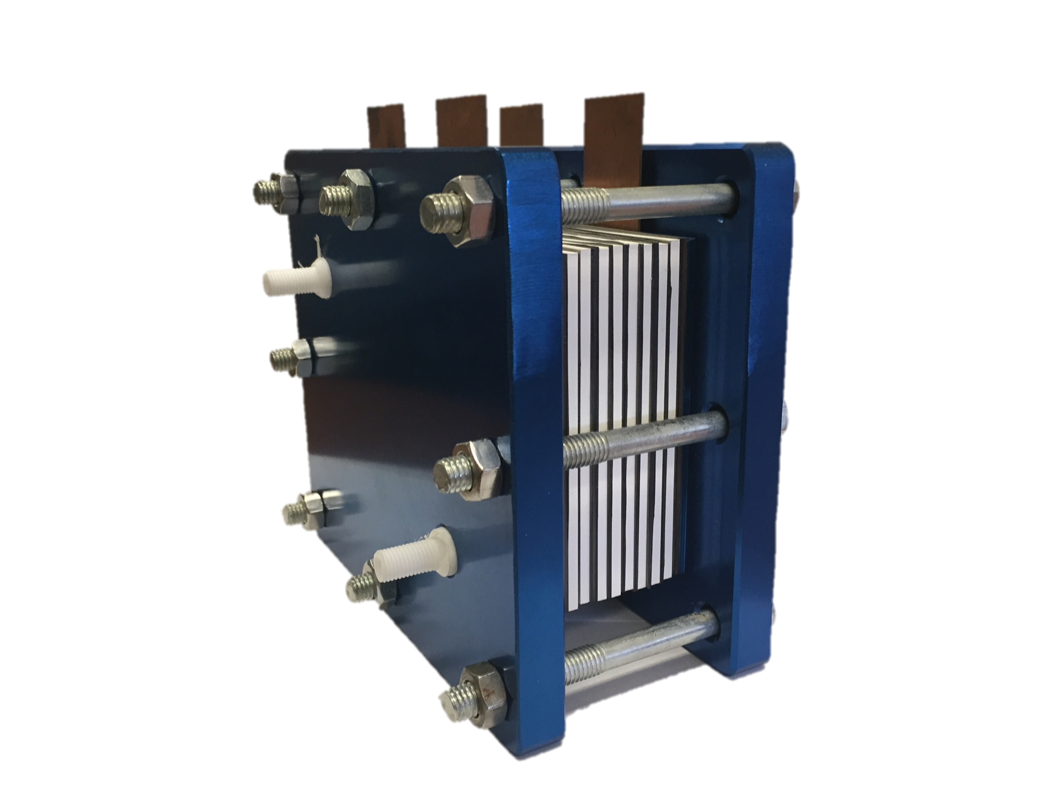Viologen Redox Flow Battery
USU has developed a series of low-cost, highly water soluble viologen compounds as anode materials for pH neutral aqueous organic redox flow battery (AORFB) applications. Pairing with water soluble TEMPO or Ferrocene cathode materials, the AORFBs deliver up to 1.72V voltage and 45.5 Wh/L theoretical energy density with excellent cycling stability.
Problem
Renewable energy (e.g., solar and wind) can make a significant contribution to meeting the increasing global energy demands. However, its successful penetration into the existing electrical grids requires effective energy-storage solutions to overcome its intermittence. Redox flow batteries (RFBs) are a suitable option for large-scale energy-storage applications (up to MW/MWh). There is an urgent call to develop low-cost and benign RFB technologies to meet the burgeoning energy-storage demands. A new generation of aqueous organic RFBs utilizing sustainable and tunable redox active organic molecules has emerged as a game changer for electrochemical energy storage.
Solution
USU has invented a class of rationally designed, highly reductive, and high-charge capacity redox-active viologen molecules as a class of two electron storage anolyte materials that promise aqueous organic RFBs with high voltage, high power density, and high energy density.
- Inexpensive < $100/kWh compared to Vanadium RFBs (> $400/kWh) and Li ion (> $400/kWh)
- High power (> 150 mW/cm2) and high energy (> 40 Wh/L)
- Durable (> 1000 cycles)
- pH neutral and non-flammable, and safe to use
Benefits
AORFBs have several outstanding advantages for large-scale energy storage, five of which are:
- Using organic redox-active molecules consisting of earth-abundant elements is a sustainable practice.
- Redox-active molecules are also synthetically tuneable to gain high oxidation or low reduction redox potentials and can have high solubility, thus offering high energy density RFBs, as well as provide optimal membrane compatibility.
- Utilization of non-flammable aqueous electrolytes offers safety benefits.
- Aqueous electrolytes consisting of water and simple inorganic supporting electrolytes, such as NaCl and KOH, are inexpensive.
- High-conductivity aqueous electrolytes (>100 mS/cm) and well-developed selective ion-conductive membranes for aqueous electrolytes allow high current and high power operation while achieving high energy efficiency.
Applications
This energy storage device has the capability of penetrating the renewable energy storage market from personal/residential electricity storage, to large-scale power grid buffering applications. Unlike established Li-ion, Pb-acid, or vanadium flow batteries, USU’s AORFB can meet the safety and cost targets necessary for viability at large scale. USU anticipates the first commercial target will be solar and wind energy utility facilities. This system can be scaled to buffer the intermittent energy output from these sources, while maintaining a safe, non-flammable and non-corrosive energy storage system at residential, military, industrial and utility system installations.

Contact
Questions about this technology including licensing availability can be directed to:
Christian Iverson, MBA
Executive Director, Technology Transfer Services
(435) 797-9620
christian.iverson@usu.edu
Inteum ID C16017
Inventors
Tianbiao Liu, Ph.D.
Chemistry
Bo Hu, Ph.D. Candidate
Chemistry
Camden Debruler, Ph.D.
Chemistry
Jian Luo, Ph.D.
Chemistry
Development Stage
TRL 4
Patent Status
Issued U.S. Patent No. 10,934,258
Publications
"Designer Two-Electron Storage Viologen Anolyte Materials for Neutral Aqueous Organic Redox Flow Batteries", Chem, Volume 3, Issue 6, 2017, Pages 961-978, ISSN 2451-9294, (See article 1 & article 2)

